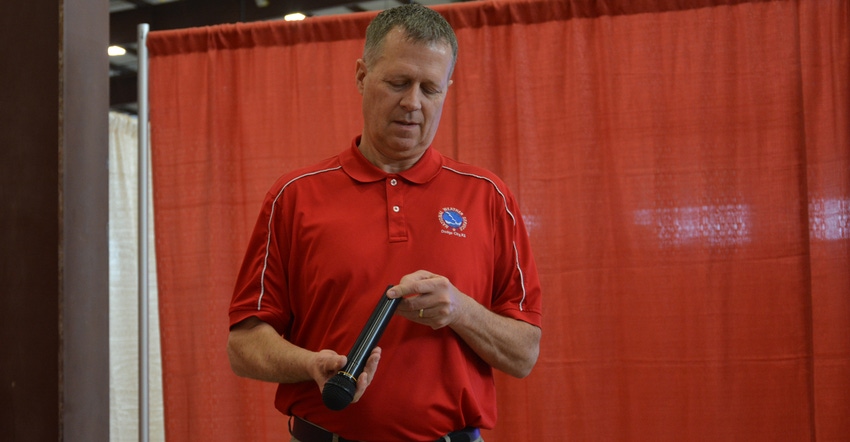
Western Kansas saw its fifth year in a row of above-average rainfall in 2018. Jeff Hutton, warning coordinating meteorologist with the National Weather Service in Dodge City, says the question now is will 2019, which has started off very wet, be the sixth year in a row?
“Since Oct. 1, we have had almost three times the normal rainfall in this region, and for the first time in a long time almost none of the United States is in drought,” Hutton told visitors at the 3i Show who had gathered to hear his thoughts about the upcoming growing season.
Hutton added that while the overall trend for the past several years have been higher temperatures and a lengthening growing season, we may be entering a period when we will see some sharp cooling.
“That is sunspot related,” he said. “We have been seeing a very active period of sunspot activity and that appears to be changing. During periods of very low activity, we tend to see cooler weather.”
That said, Hutton added that it is difficult to offer a long-range forecast with any surety.
“This time last year, it was very dry, and our biggest concern was that we’d see a summer of severe drought. Then it started to rain, and it basically hasn’t stopped since,” he said. “So, just as our concern now is how wet it is, we could see an end to the rain and another round of very dry weather. About the only certainty in Kansas weather is that it can change overnight and there is no real normal, just the average of the extremes that do occur.”
He brought up much-watched El Nino conditions that have been in place through the winter and said the computer models are suggesting that it will continue well into the summer — a pattern that is quite unusual.
Most of the time, El Nino occurs during the winter months and fades during the summer, sometimes returning again in the fall.
“This El Nino has been a very weak one and it is expected to remain that way,” he said. “Its weakness leaves us with some question as to how much impact it is having on the atmosphere.”
During an El Nino, waters of the equatorial Pacific Ocean warm up, creating a response in the atmosphere that impacts weather around the world. An opposite event, La Nina, results in a cooling of the water. The warming and cooling events occur in cycles and are called the El Nino Southern Oscillation. Events typically last one to two years with periods between events referred to as “ENSO neutral.”
Hutton said that several other ocean warming and cooling cycles also have weather impacts. The North Atlantic Multi-Decadal Oscillation, the North Pacific Decadal Oscillation, the Arctic Oscillation and the Madden Julian Oscillation all create atmospheric responses as the ocean waters warm and cool.
Hutton also shared the long-range outlooks produced by the computer models. For the period of March through May and the 90-day period from June 1 to August 31, the models literally don’t know. They show an equal chance of above- or below-normal precipitation, and an equal chance of above or below normal temperatures.
“About the best advice I can give farmers in Kansas is to keep an eye on what happens in west Texas. Right now, west Texas, like Kansas, is wet. If it turns hot and dry, then there’s a much greater likelihood that Kansas will as well,” Hutton said.
He said weather watchers can find more forecasts and weather conversations on his blog, swkswx.blogspot.com. The blog is based on Hutton’s observations and is not a product of the National Weather Service.
About the Author(s)
You May Also Like






